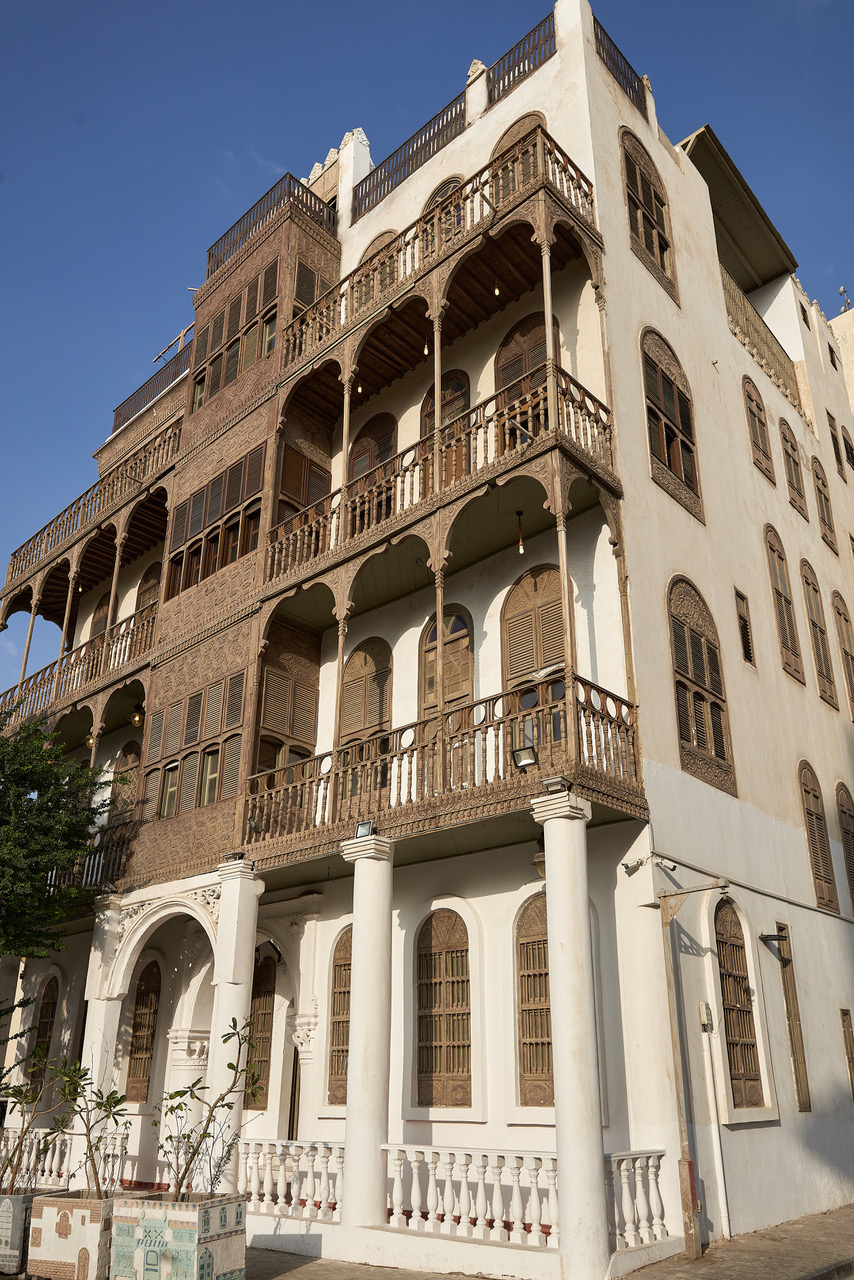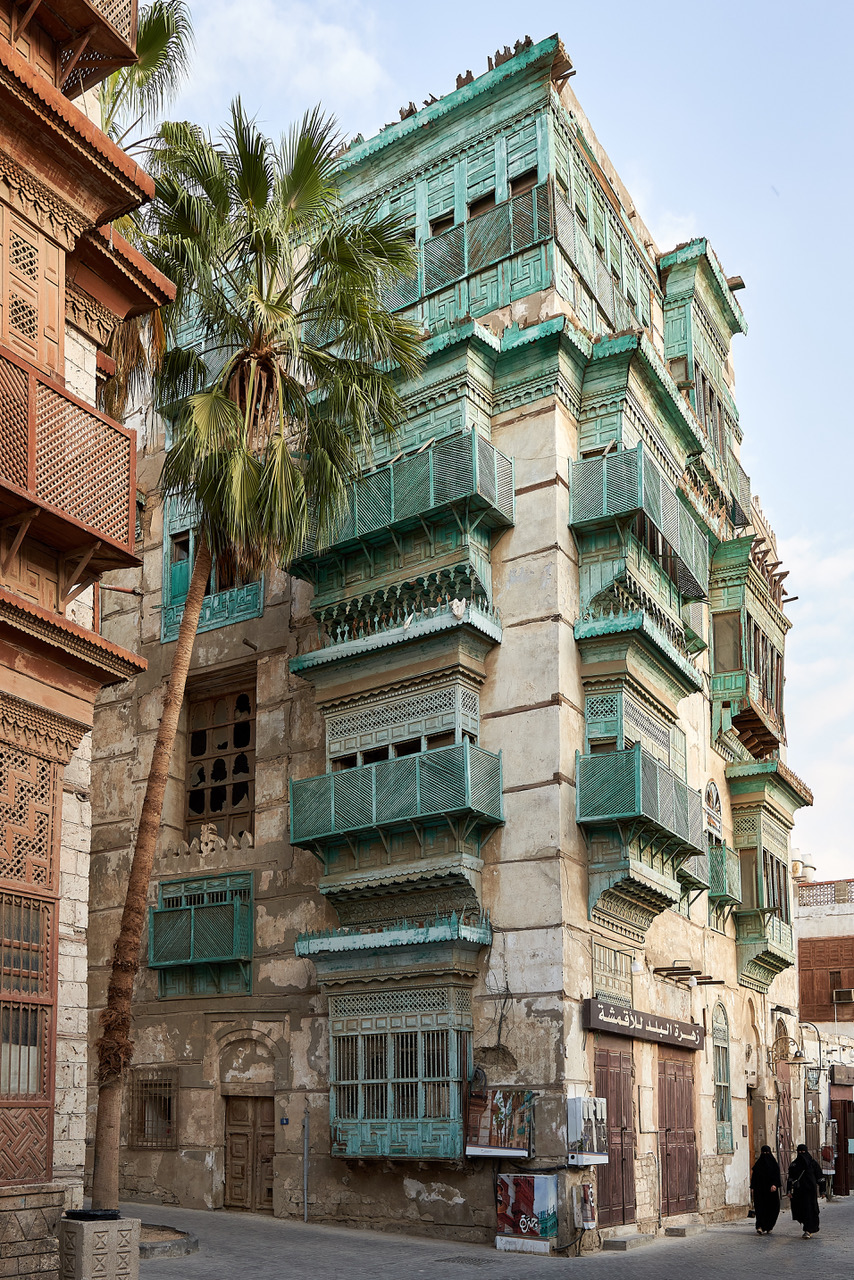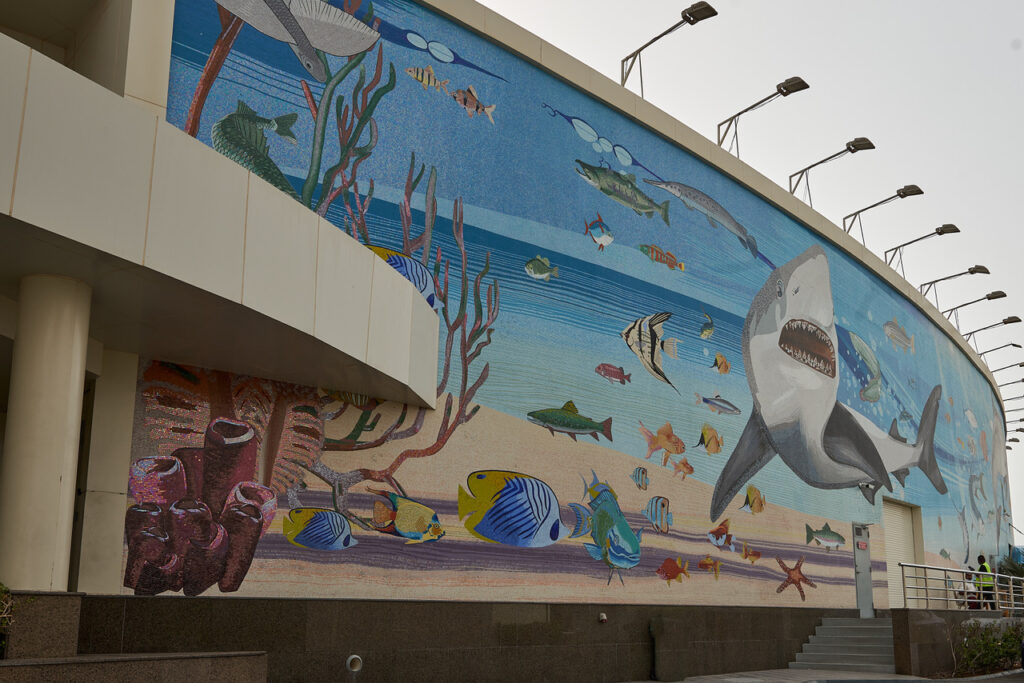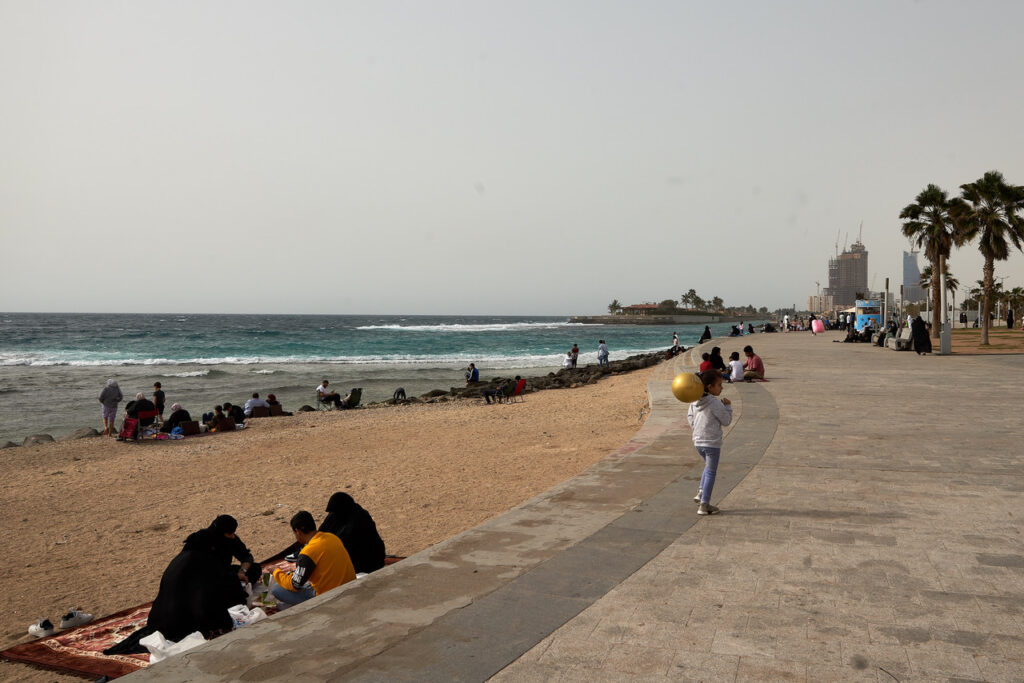Hejazi Architecture and Rawasheen
A real attraction of Jeddah is undoubtedly the preserved Hejazi architecture in Al Balad. It beguiles with the most beautiful coral stone buildings on the Red Sea, even though most of them are unfortunately in an advanced, desolate structural condition and in need of complete restoration.
These imposing (three- to five-story) mansions were built in the late 19th century by the city’s merchant elite and have fortunately defied all odds – now they are part of a renovation of the entire city center under a UNESCO program.
A special architectural pattern of these residences are the wooden projecting alcoves from the end walls – a kind of covered balconies – called rawasheen. They are often combined with mashrabiyas, which cover the bay windows in front of the stylish rawasheen with carved wooden lattices. Architectural style elements continue to include ornate Hejazi doors.
I must limit myself here to a few examples of this architecture.

The Al Sharbatly Cultural House (Bait Sharbatly), built in 1910 (1917?), is considered one of the best preserved houses in the historic district of Jeddah. The cream-coloured, four-storey mansion is known for its beautiful mashrabiyas with their wooden lattice balconies extending over three floors, with windows and balconies decorated with rawasheen wooden decorations in the Hejazi style.
It is also worth mentioning the Baeshen House, the residence of the family of Sheikh Mohammad Saleh bin Baeshen, which shows its original treasures to the interested visitor. The building itself is another example of coral stone and woodwork architecture. Incidentally, the wealth of its former inhabitants is also evidenced by its own private mosque, which is located in the backyard.

In Nadalah Ibn Khalid Lane, in front of the intersection with Souq Al Jami, presents one of the most magnificent and also proudest examples of a mansion. It features ornate, exceedingly beautiful rawasheen and mashrabiya, some of which are unfortunately badly weathered and damaged, but some of which are still halfway tolerable and present themselves in all their beauty and ornamentation in a washed-out green-turquoise – despite the overall condition of the mansion: simply extraordinarily magnificent.
Continuing east to the Gate to Mecca (Bab Makkah), you will come across “Herbalist’s Lane,” which consists of houses with many herb pots along some narrow alleys. The Herbalist’s Lane is part of an initiative by some local residents to beautify their surroundings. It is a nice place of tranquility in this overall busy environment.
You will then reach Bait Al Nasseef. It is a marvel of one of the first Oriental-designed Arab mansions in Jeddah.
A few meters west of Bait Al Nasseef is another beautiful mansion: the Bait Al Nour Wali, which is currently undergoing a complete renovation (as of March 2022). Its unique green rawasheen is the showpiece of the mansion pictured in the cover photo on Jeddah.
If you want to learn more about Al Balad’s remarkable architecture, to follow a suggested walking tour, or to have a look at detailed maps of the sights and souq streets, you can do all that in my ebook “Dr. Hans-F. Loth – Travel Guide Riyadh and Jeddah“.

